One of the most important tools for a local insurance agency is their Google My Business listing. Use this guide to make sure your listing is set up correctly and you’re taking advantage of all it has to offer.
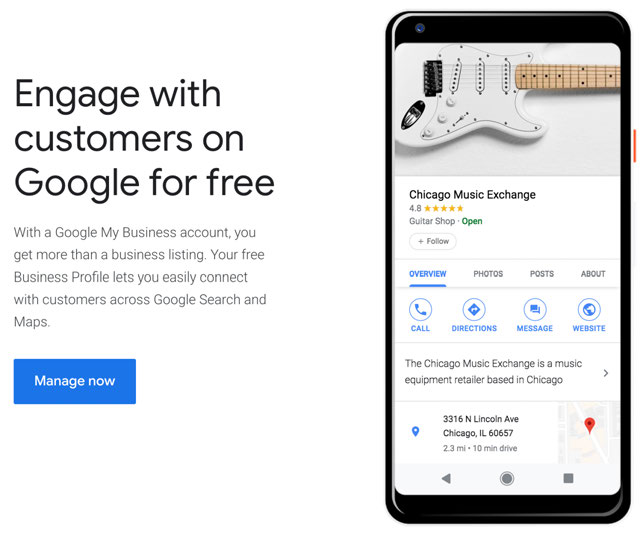
Overview
Google My Business (GMB) is a free tool from Google. It helps your agency appear when potential customers search for your insurance services on Google. It’s connected to your Google Maps listing and displays your location, customer reviews, your services, phone number, hours of operation, and more. Claiming your listing and optimizing it is crucial to your digital marketing success.
Your Google My Business listing does not replace your website. In fact, having a website link in your listing is an important factor in getting your agency listed higher in local rankings. Chances are your business is already listed on Google My Business. If you haven’t already, you should “claim” your business listing and update it fully.
1. Claim Your Business Listing
To begin, do a Google Search for your agency. Include your address in the search to make sure the listing appears. If your business does appear, click “Own This Business” in the lower part of the listing.
An alternate way to claim your listing is to go to https://business.google.com/create. If you have a listing it will appear in the initial search. If you don’t you can begin creating your listing.
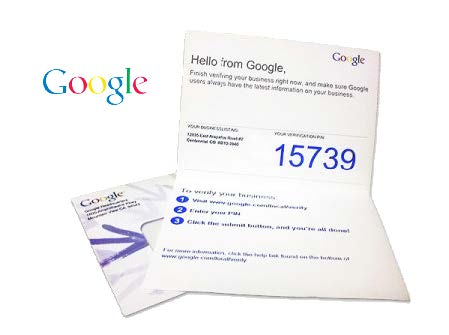 2. Verify Your Listing
2. Verify Your Listing
You need to verify your Google My Business listing. This is done via an automated phone call or a postcard sent by mail which can take up to five business days. It proves to Google you are authorized to represent the business you’re claiming. It’s important to know that Google won’t display your business or its edits until the business is verified.
Without verification, you can’t access your dashboard, manage reviews, or do other key functions associated with managing your profile.
3. Enter Complete Information
The more thoroughly you enter your information the better, but the following are several of the most crucial bits of information to include.
- Website: As mentioned above, having a link to your website is a factor that can influence your rankings in local search. Most of the time it’s best to link to your home page, but if you have several locations, consider linking to a page on your website that talks about the particular location.
- Choose Your Agency Categories: The second most important factor in your rankings is to choose your business categories. You are allowed to select up to ten categories with one being your primary category. Click on the little pencil icon below your agency name on the Info page to begin. Start typing “insurance” and all the possible selections available will appear. A good selection of choices might be Insurance Agency (Primary Category), Auto Insurance Agency, Home Insurance Agency, Life Insurance Agency, Motorcycle Insurance Agency, Health Insurance Agency, Dental Insurance Agency. Many agencies make the mistake of choosing just one category.
- Phone Number: It goes without saying your phone number should be accurate and consistent across all your listings.
- Pictures: Businesses with photos on their listings receive 42% more requests for driving directions on Google Maps and 35% more click-throughs to their website than businesses without photos, according to Google. These can be pictures of your products, services, employees and your office. Get creative.
- Your Logo: It’s likely to have more impact than any other single image. It helps customers identify your business and is part of your key branding. Google recommends using a square sized image containing your logo. You can experiment to see what works best.
- Business Description: Write a short description of your business and be sure to include important “keywords”. Keywords are the short phrases that users type to search for your products or services on Google. You don’t need to include all possible keywords, just the main two or three that are most relevant.
- Hours: Be sure your hours are accurate. If they change, be sure to change them on your listing. Google gives you the ability to update them for holidays and special events. Keep users happy by having accurate information.
The information listed above outlines the most important fields to complete to rank better in local search. Other fields like Q&A, Services and Products do not directly influence search rankings according to MOZ but they can be helpful to add and may increase click-throughs by users.
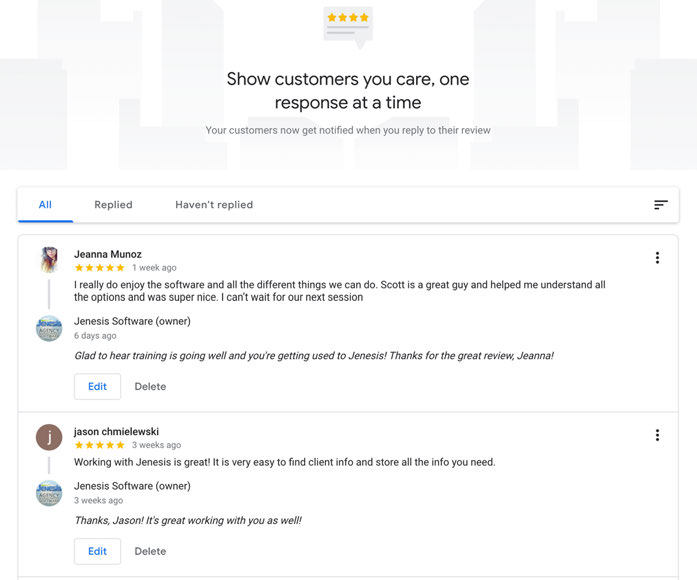 4. Get and Manage Customer Reviews
4. Get and Manage Customer Reviews
Users are very aware of the number of reviews you have. Taking the time to ask trusted customers to leave you a review is well worth the effort. Reviews are trust signals to potential customers and can make the difference in a user’s decision to contact you. Be aware that, in today’s hyper-connected world, it is possible for someone to leave a negative review. The more positive reviews you have will reduce the importance of a less than positive review and your overall rating score will remain high.
You should also respond to reviews. Users like a responsive business and, by responding to reviews, you show you care. There’s a Reviews tab in the dashboard where you can respond when a customer leaves a review. A short note like “Thank you CUSTOMER NAME. Please don’t hesitate to contact us if we can help” can go a long way. If you receive a less than positive review, reply to it as well. Offer to make the situation better.
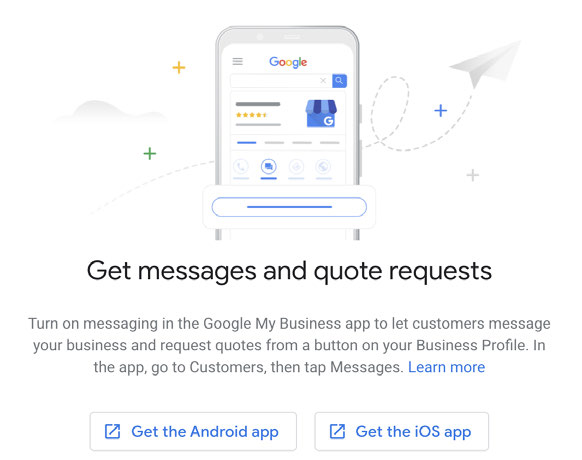 5. Consider Letting Customers Message You
5. Consider Letting Customers Message You
While it may seem inconvenient at times to have to respond to customer messages, it can be well worth the effort. Customers can ask questions or request quotes directly from your listing. You can set up customized automated responses that welcome or give an explanation regarding when you will respond. Obviously, the quicker the response the better, but keeping your response time under 24 hours is generally acceptable.
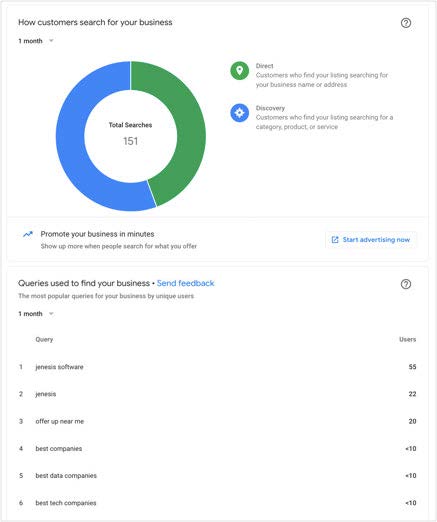 6. Monitor Your Google My Business Insights
6. Monitor Your Google My Business Insights
There are useful analytical data available in Google My Business listings called Insights. It helps you understand how customers are interacting with your listing. The data available includes:
- How customers find your listing.
- Where customers find you on Google.
- Customer actions.
- Direction requests.
- Phone calls.
Advanced Features
There’s much more you can do with your Google My Business listing than is outlined above. These are just the basics that every business needs to get started. You can create informational Posts, outline your Covid-19 strategies and create a Product Catalog. We recommend you explore all the tools and insights and find what works best for you. It doesn’t have to be time-consuming once it’s set up. We recommend you build time into your schedule to regularly review your listing and provide some updates about your business. In the long run, it will be time well spent. Google My Business can be a major tool in your digital marketing arsenal.
If you would like professional help with the advanced features and tracking available in Google My Business, please contact us. We’d be happy to discuss your listing and provide a digital marketing review of your website and other digital marketing efforts.
About The Author
 Phil Price – Phil is a website design and digital marketing specialist for JenesisWeb. He works with small businesses to maximize sales and grow. He knows real success doesn’t come from mastering the marketing flavor of the week, but from creating real trust and connections. Phil has created innovative and award-winning work for literally hundreds of Fortune 1000 companies and their agencies and is a graduate of UNC Chapel Hill.
Phil Price – Phil is a website design and digital marketing specialist for JenesisWeb. He works with small businesses to maximize sales and grow. He knows real success doesn’t come from mastering the marketing flavor of the week, but from creating real trust and connections. Phil has created innovative and award-winning work for literally hundreds of Fortune 1000 companies and their agencies and is a graduate of UNC Chapel Hill.
